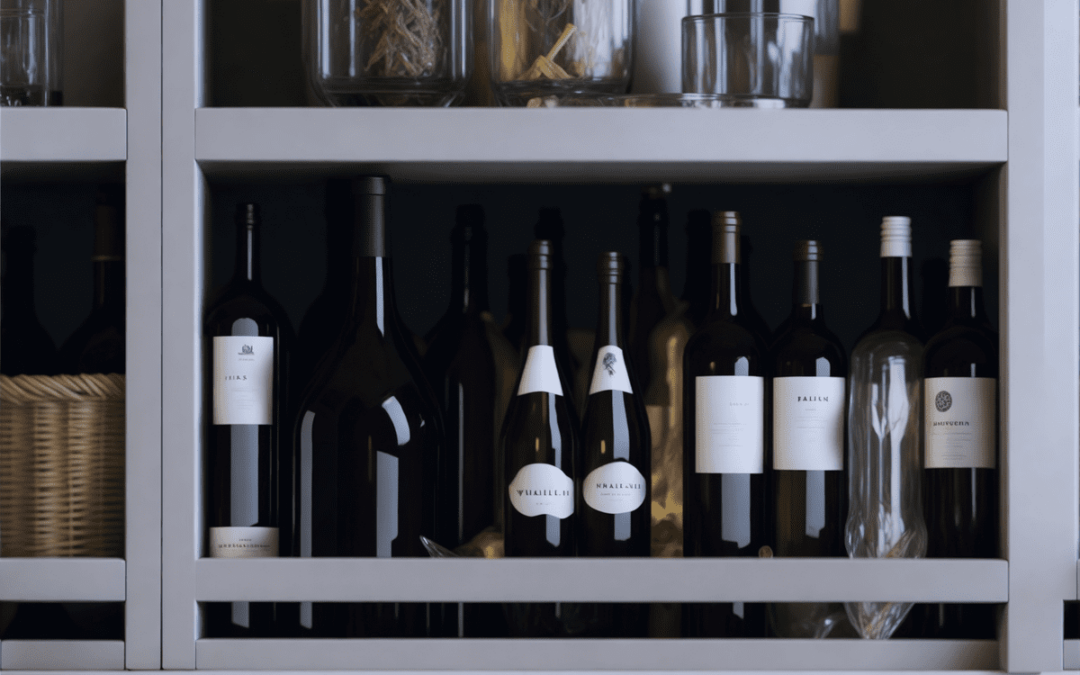The best wines age gracefully. A well-seasoned wine matures and refines to its optimal flavors, allowing you to enjoy its delicious reward when the time is right. Apart from patience, properly storing a bottle of wine is key to preserving and building its profile. Having a wine cellar is important, but specific conditions must be maintained to ensure your bottles stay safe and taste better in the coming months and years.
Why Wine Storage Matters
At Cornerstone Cellars, we know a thing or two about wine storage. We want nothing more than for you to experience maximum flavor, so we recommend these seven quick wine storage tips for beginners and more experienced wine enthusiasts. Your palette will thank you.
1. Avoid Temperature Fluctuations in Wine Storage
Temperature is an extremely important factor when deciding where to store your wine and protecting your wine flavor. It’s best to avoid storing your bottles near windows, heaters, appliances, and anywhere that experiences extreme temperature jumps. Otherwise, your wine will spoil and lose its flavor.
When choosing your cellar, aim for an ideal wine storage temperature of between 45°F (7°C) and 65°F (18°C), with around 55°F (13°C) being ideal, especially for temperature-sensitive wines. However, different styles of wine require different storage temperatures. For example, full-bodied reds like our Oakville Cabernet Sauvignon should be stored at a slightly warmer temperature than light white wines.
What are the Best Temperatures at Which to Store Wine?
- 55-60°F for full-bodied red wines
- 50-55°F for full-bodied whites and light red wines
- 40-50°F for light white wines, rosé, and sparkling wines
2. Store Wine in Dark Places to Protect Quality
We recommend keeping your bottles in a relatively dark, cool place. The effects of direct light on wine can harm the product, causing it to age prematurely and develop off-flavors. To maintain the quality of your wine, consider investing in a wine cabinet with doors or away from windows—just to name a few suggestions.
3. Avoid Vibrations
Vibrations, too, can disturb the aging process of your wine. Heavy foot traffic areas, washing machines, refrigerators, and anything else shaking your cellar’s foundation can impact the quality of the wine. Vibrations can also disrupt the sediment in the wine, impacting its taste and texture, especially in aged wines. And just to be safe, we recommend that you cushion your wine shelves with rubber, place padding on the floor around the shelves, and keep your wine low to the ground.
4. Maintain Humidity Levels
Aim for a wine storage humidity level of 50-70% in your wine storage area. Low humidity can cause your corks to dry out, which can spoil your wine, and too high humidity can cause mold and mildew growth. A hygrometer can be a useful tool in monitoring your humidity levels and can alert you if your humidity levels are too high or too low.
5. Store Wine Bottles Horizontally to Maintain Cork Integrity
Another way to dry out your corks and prematurely age your wine is to store your bottles standing up. Simply storing them on their side keeps your cork moist and properly sealed, and it makes the most of your space. A dry cork can lead to oxidation, spoiling the wine’s flavor. Prioritizing density allows for condensed rows, maximizes storage capabilities, and even keeps your wine more accessible and within reach.
6. Don’t Move Your Wine Too Much
Moving your wine from place to place can greatly disturb the aging process, causing the wine to become cloudy or even gritty. Stability is important for maintaining the flavor of wine, so if you need to move them, keep them at a level position to minimize disturbing the sediment and stability of the wine. It also doesn’t hurt to plan ahead where you plan to store your bottles to avoid constant change and motion.
7. Keep Track of Your Inventory
Every bottle of wine needs different lengths of time to age to perfection. One of the best ways to store wine at home is simply to stay organized! Start by labeling your bottles with vintage, producer, and other relevant information to track their aging potential and get the most out of your collection.
Visit Cornerstone Cellars
If you’re ready to start wine preservation at home, there’s no better place to get started than at a winery. Come out to Cornerstone Cellars for a tasting, and we’ll introduce you to delicious wines from our vineyards. We’ll be more than happy to help you find the perfect bottle that suits your palette and give you the best wine storage practices and wine storage mistakes to avoid. We hope to see you in Yountville soon!

